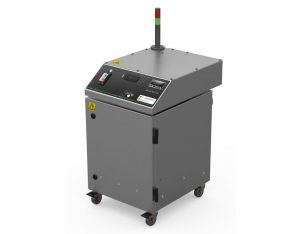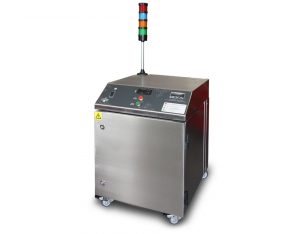Lasers: The multi-functional, high-speed, precision tool for advanced manufacturing processes

It’s an industrial processing tool that’s been likened to a Swiss Army knife. Lasering has certainly come a long way since the 1960s to the point where there are almost as many applications as there are industry sectors.
From PCB precision cutting and ultra-fast FMCG marking and coding to high-end cosmetic packaging and bespoke fashion finishes, laser technology has transformed how many industries work.
The evolution into the latest generation of fast fiber lasers continues to broaden this demand and with it a growing range of materials being worked, whether that’s metal, plastic, MDF, PVC, acrylic, textile or new generation functional materials developed for laser 3D printing. What all these processes have in common is fume or particulate emissions at the point of ablation…and that requires extraction technology to help maintain productivity and contribute to a clean, healthy working environment.
Take the FMCG drinks market for example, where the speed of laser coding is critical to productivity. The frequency at which a laser is firing, the wavelength at which it operates and the power density it generates are all factors that govern how quickly and accurately a laser can operate.
However, what manufacturers increasingly understand is that fume and dust extraction technology, such as the portable systems developed by BOFA, also needs to keep pace with line speeds to filter particulate that could otherwise contaminate laser lenses, damage product quality or negatively impact on atmosphere management.
For BOFA, this means understanding the size and chemical profile of emissions in order to implement an appropriate filtration strategy. At the same time, understanding the impact of momentum on the ability of particulate to ‘travel’ beyond the point of ablation requires detailed airflow analysis and a corresponding refinement of system architecture and control systems.
“Where manufacturers are considering the use of lasers, it is advisable to contact BOFA at an early stage because there are many dynamics at play in filtration and extraction performance,” explains Geoff Sagar, Product Manager, BOFA International.
“This engagement will enable our engineers to make a detailed assessment of what is being emitted and recommend the precise system design to create optimal conditions for laser performance and to return clean air into the workplace.”

Assumption can be the enemy of productivity in manufacturing. For example, when a high-end sparkling wine producer opted to laser engrave glass bottles with a logo, it was known that the process would produce silica dust, which can create health risks if not filtered. Lasering with high intensity creates localized areas of very high temperature and what wasn’t understood was that the immediate release of silica dust caused by ablation would be followed by a secondary release as the area cooled.
This was only noticed when residue started to appear on a surface away from the immediate laser area. The solution was to add a second-stage filtration point.

It’s not just fume and dust that laser operators need to take into account. Fibre lasers operate at high speeds and accuracy and, as a consequence, generate significant heat. BOFA has developed a range of temperature control and cooling units that help ensure the laser head is kept at a temperature that optimizes reliability and performance while protecting the integrity of high-value equipment.
At the same time, manufacturers also need to understand that fiber lasers working with aluminum can under certain circumstances create a thermal event. So, BOFA has developed the FireBox MA and the Spark Arrestor 2 to intercept and retain any hot embers before they reach the extraction system.

Finally, how extraction is controlled can make a significant contribution to productivity in an increasingly data-driven and automated environment. BOFA’s iQ2 operating platform features a host of functionality enhancements and innovations, including extended onboard data logs and real-time system condition visualization. The system also supports a color touchscreen user interface, smart alarm configuration and remote system upgrades.
In short, better operational data and information means better extraction performance, enabling planned filter exchanges linked to production scheduling, avoiding unnecessary downtime.


